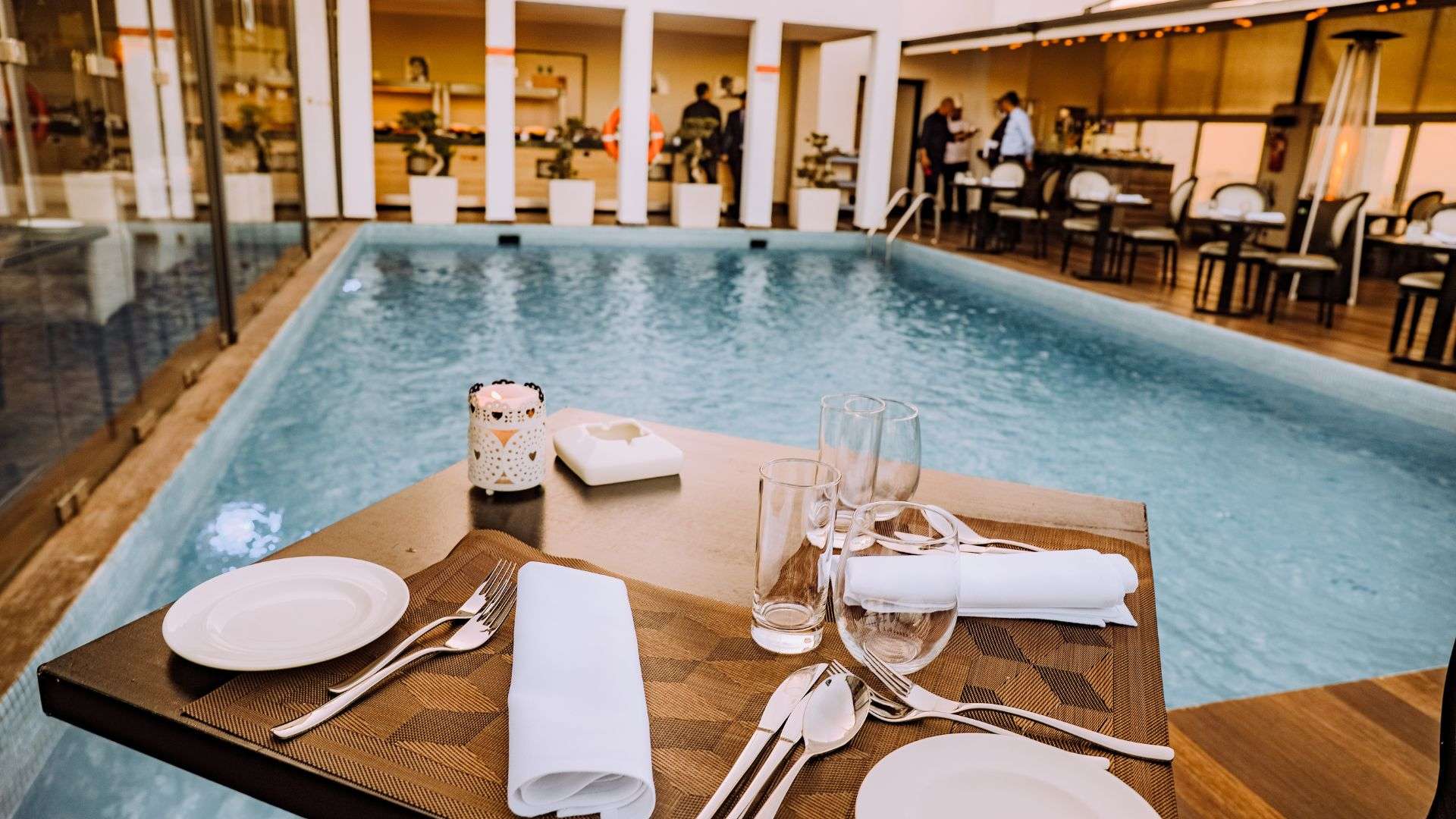Virtual reality (VR) is an immersive experience that digitally recreates a real or imagined environment. VR enables a user to interact with a computer-generated image that appears realistic and three-dimensional (3D).
Virtual Reality offers a more immersive experience than traditional applications. Hotel chains have been early adopters of VR technology, but not enough have tapped into this powerful marketing tool. In fact, you see far more hotels still using flat 2D photos of their hotel rooms and amenities. So many lost opportunities for visually enriching their message and connection with customers! Some hotels offer virtual tours that allow potential customers to visualize their stay without physically visiting the hotel.
VR 360 video and VR headsets transport users to computer-generated simulations; people can even hold VR controllers or interact with virtual objects. It’s designed to be more immersive than augmented reality (AR) — which could lead brands to use it for experiences rather than decision making. An example of this would be taking a virtual tour of a hotel to see if you can picture yourself staying there.
VR Immersion
VR transports you to any place imaginable and gives you a true 3D depiction of the hotel property — its amenities, attractions, and atmosphere. This is an effective way for hotels and resorts to market their property and increase interest in booking accommodations through VR immersion.
The virtual tour uses 360° spherical video and computer-generated rendering to transport users via their mobile device or PC desktop. Users can get an immersive look at hotel amenities like the fitness center, restaurant, bar area, and pool deck before heading out on vacation.
VR as a Marketing Tool
VR is also proving to be a useful tool for hotels marketing their properties to businesses. A study by TIG Global and Omni Hotels found that virtual tours on a hotel’s website increased bookings and conversion (look-to-book) rates by 16 to 67%.
While VR is growing in popularity and use across many industries, there are still some limitations to this technology.
VR headsets are not only expensive but they also take up space, which makes them difficult to transport to trade shows and events; however there is an alternative method of virtual reality that doesn’t require the user to physically attend an event or travel to a location.
360 Video
360° video, which is actually just video played on a sphere-shaped display, allows users to pan around at their leisure and explore environments by moving through them. This technology has created virtual tours for the Cannes Film Festival, the World Cup, and other events.
Check out these VR tours for hotels:
- ViviScape’s VR tour for Essenhaus Experience Inn
- Atlantis Dubai Virtual Tour
- Bora Bora’s Overwater Bungalows In 360 Video VR
- Grand Oasis Hotel 360° VR Tour
- Hotels 360 VR, 360 video Virtual Tour for hotel – Holiday Inn Express Sydney
Hotels could also use VR to market more than just their property. Brands that offer complimentary services, like spa treatments or restaurant meals, can create custom experiences for users to explore these offerings. By creating a 360° video of the environment and offering it on platforms like YouTube, users can dive into a resort, watch an activity unfold around them and decide whether they want to book the experience.
Where will VR be used?
The travel industry is a top adopter of immersive technologies. The heavy investments in AR and VR by Facebook, Google, Microsoft, and the like only serve as further confirmation that this new technology is taking UX design seriously.
With VR, consumers can tour a hotel before they book it. VR enables the experience of live events – like concerts – from the comfort of your living room. Other industries are also interested in incorporating VR into their design process as well as including it as part of customer service.
Virtual tours are one of the best uses for VR in travel, especially in the hospitality industry. Hotels create
virtual tours of their rooms, common areas, restaurant spaces, pools, and conventions centers to show off their amenities.
VR helps travelers visualize their stay. Travelers will be able to view the hotel rooms and see the quality of the accommodations as well as the amenities included. This is a huge selling point for hotels. VR makes it possible for travelers to experience destinations like never before. Better yet, VR takes the shopping experience to an entirely new level; instead of showing people photos and videos of what a hotel looks like, VR tours make them feel as though they are there.
Travelers can access VR tours via the web, their mobile device, or a virtual reality headset. While this innovative technology is currently being used mostly by big and luxury hotels, it is slowly trickling down to the mid-market segment.
Benefits of Virtual Reality Tours for Hotels
Virtual reality tours create an opportunity for the user to check out the amenities and overall ambience of a space before committing to purchasing it. The goal of VR is to show the user what the hotel looks like in a more realistic manner than photos or videos can.
What kinds of virtual reality will be used?
The most common type of VR is video-based, while augmented reality (AR) makes use of computer generated images.
One thing that sets VR apart from traditional media is the idea of immersion. Virtual reality creates a sense of “presence” for users. When people are immersed in an experience entirely through sound and vision (as they would be with virtual reality), they become part of the experience in a way that they cannot through traditional media. A full VR experience also requires interaction which is why designers need to know how users will interact with their environment when using virtual reality.
What kinds of features and benefits can we expect?
Currently, there are three ways in which hotels can integrate virtual reality into the booking experience: the first is by showing 360-degree panoramas of a property; second is to create immersive, interactive virtual reality tours; and third is to use VR as a way for guests to check out an area before they visit (for example, using VR as a tour guide).
Go Virtual!
Virtual Tours for commercial use provide a new perspective on delivering information to people interested in your brand, products, or services.
The traditional vehicle of websites and mobile apps have lost their purpose, but society has started to become numb to the content pollution that has been spread throughout social media communities and the web.
Virtual tours provide a fresh new experience, bringing people closer to reality more than ever before. You can bring that experience directly to your audience in an immersive open-world experience.
Tell us your story so we create a virtual space that can help extend its mark on the world. Our team of VR experts at ViviScape can help you produce a top notch virtual tour for your hotel business.




